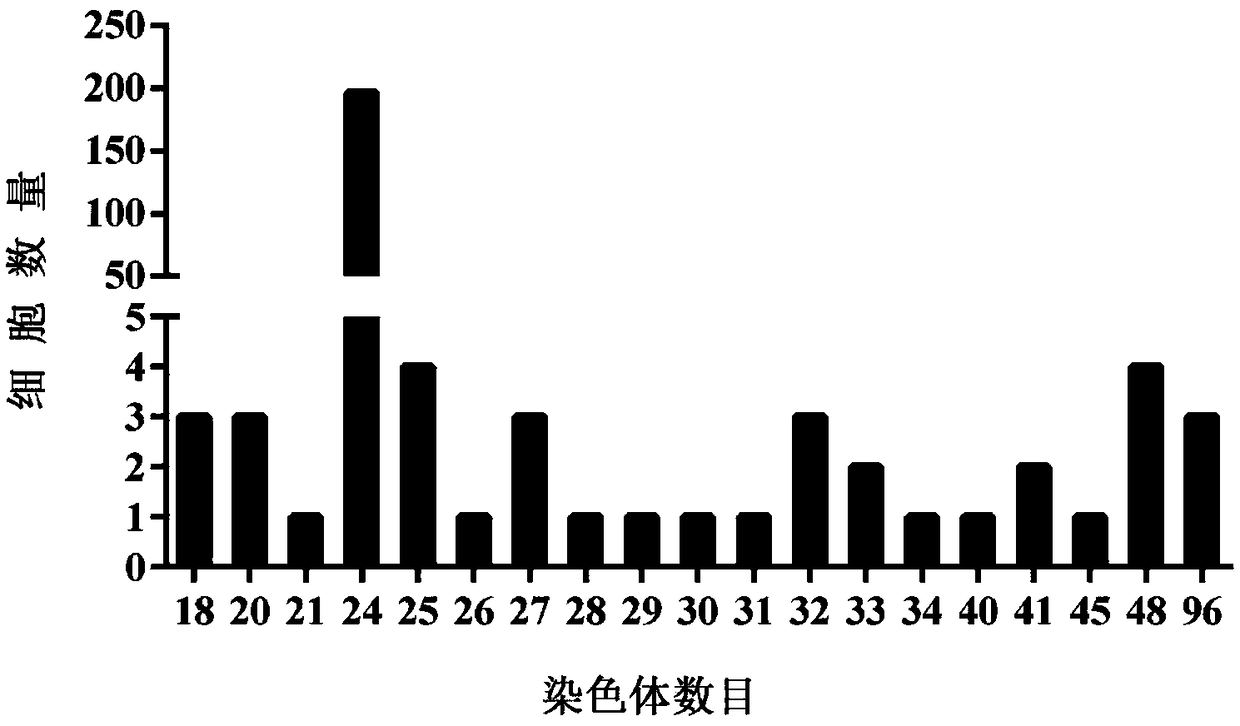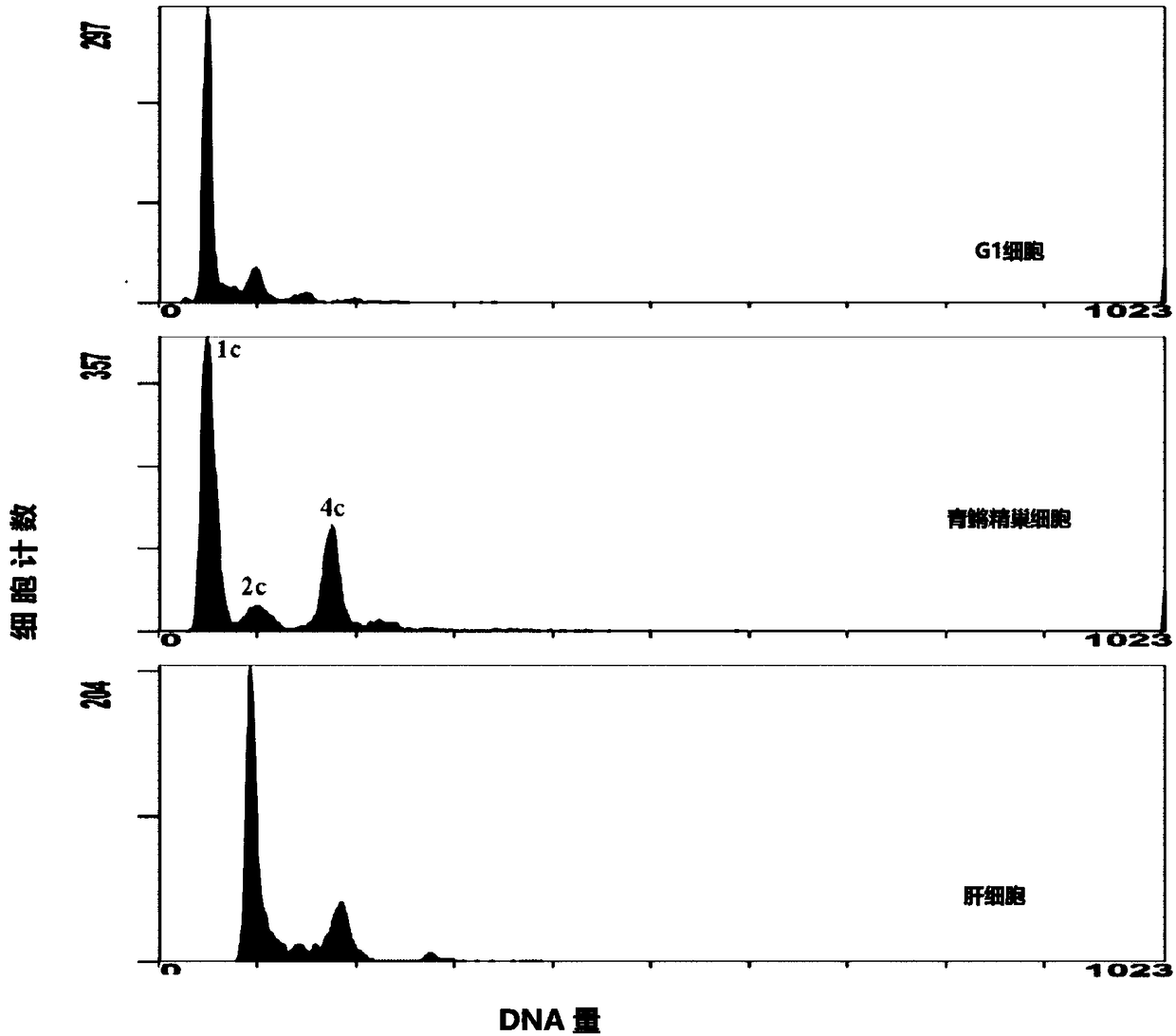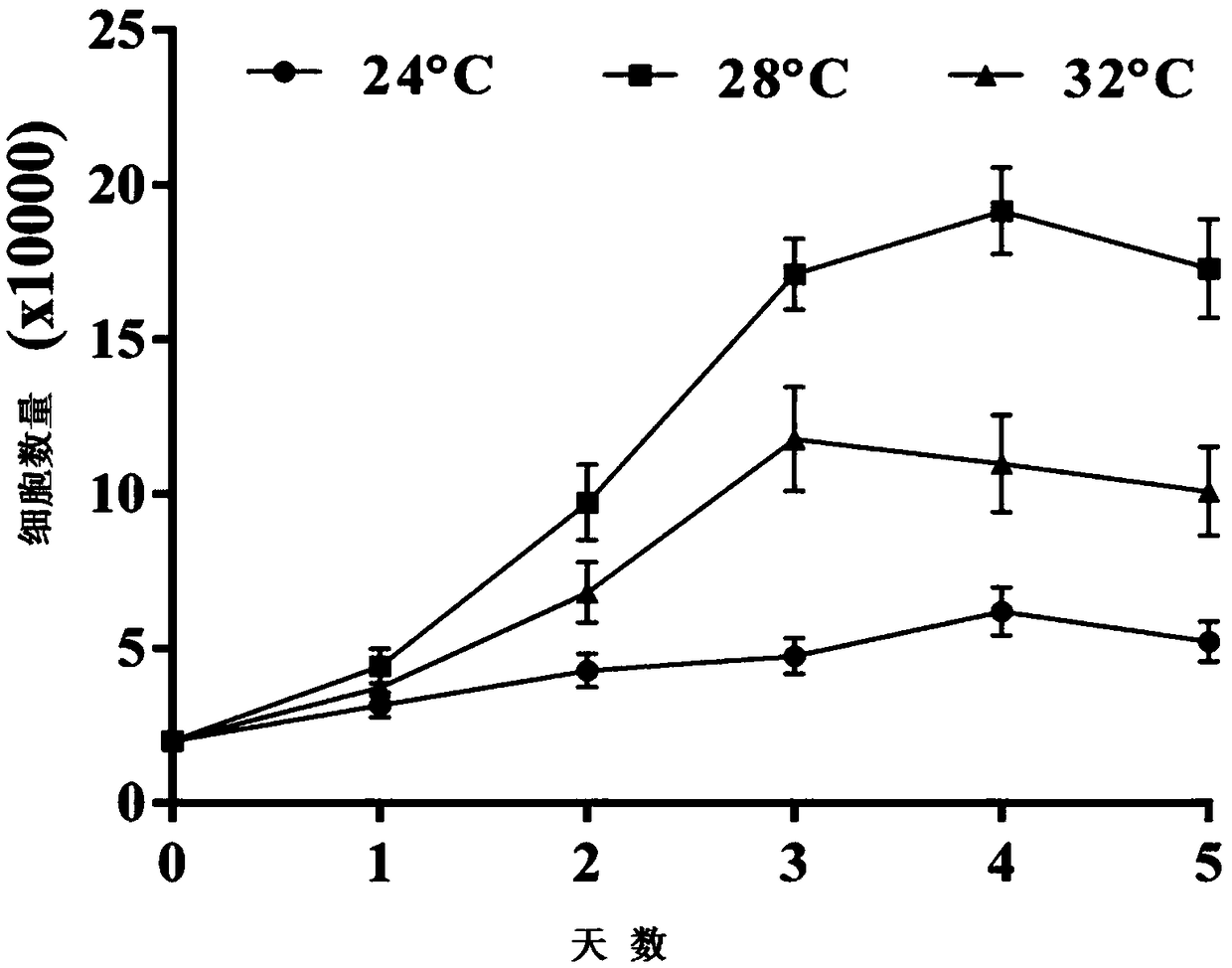Preparation method and application of anti-red-spot grouper neuronecrosis virus (tcm) embryonic stem cells
An embryonic stem cell and red-spotted grouper technology is applied in the field of preparation of medaka haploid embryonic stem cells resistant to fish nerve necrosis virus, which can solve the economic loss of the world aquaculture industry, the unclear pathogenic mechanism, and the inconsistency of host genes. question of clarity
- Summary
- Abstract
- Description
- Claims
- Application Information
AI Technical Summary
Problems solved by technology
Method used
Image
Examples
Embodiment 1
[0043] In this embodiment, RGNNV comes from this laboratory; ENU (Sigma) is dissolved in equal volumes of ethanol and PCS buffer (50mM citric acid, 100mM sodium hydrogen phosphate, pH=5.0) with a mass fraction of 95%; O 6 -BG dissolved in dimethyl sulfoxide; ESM4 medium is the fourth ES cell culture medium for medaka, based on DMEM (Dulbecco's Modified Eagle Medium), supplemented with growth factors, medaka embryo extract and fish Serum is formulated.
[0044] (1) Cultivate HX1 cells in ESM4 medium, add MEE, fish serum and bFGF as protein supplements, digest the cells with 0.25% trypsin and transfer them to 6-well cell culture plates covered with gelatin, 10 5 cells / well, placed in a 28°C incubator for 24 hours;
[0045] (2) ENU mutagenesis: adding O at a concentration of 10 μM in the medium 6 -BG pretreatment for 24 hours, then remove the medium, replace it with ESM4 medium with a final concentration of ENU of 10 mg / ml, continue to cultivate for 48 hours, about 50-60% of th...
PUM
| Property | Measurement | Unit |
|---|---|---|
| quality score | aaaaa | aaaaa |
Abstract
Description
Claims
Application Information
 Login to View More
Login to View More - R&D
- Intellectual Property
- Life Sciences
- Materials
- Tech Scout
- Unparalleled Data Quality
- Higher Quality Content
- 60% Fewer Hallucinations
Browse by: Latest US Patents, China's latest patents, Technical Efficacy Thesaurus, Application Domain, Technology Topic, Popular Technical Reports.
© 2025 PatSnap. All rights reserved.Legal|Privacy policy|Modern Slavery Act Transparency Statement|Sitemap|About US| Contact US: help@patsnap.com



